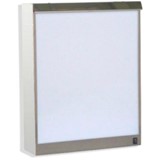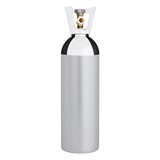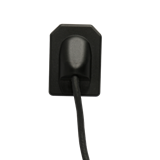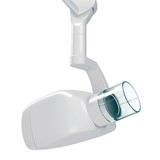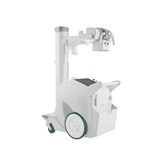Compare portable vs fixed X-ray machines in Australia. Find the best option for your clinic with expert insights on costs, compliance, and installation.
Key takeaways
- Market size & growth: Th e Australian medical imaging market is projected to grow at 5.2% CAGR through 2027, increasing demand for versatile X-ray solutions
- Cost comparison: Portable X-ray machines generally range from $40,000 to $120,000, while fixed X-ray systems can cost between $150,000 and $600,000 depending on features and installation.
- Usage flexibility: Portable units enable mobile imaging, ideal for home healthcare, rural clinics, and emergency settings; fixed systems offer superior image quality and throughput, best for high-volume hospitals.
- Maintenance & operation: Portable machines require less complex installation but more frequent battery and component checks; fixed systems have higher maintenance but longer lifecycle and integrated workflows.
- Compliance & safety: Both machine types must meet Therapeutic Goods Administration (TGA) regulations and adhere to Australian Radiation Protection and Nuclear Safety Agency (ARPANSA) guidelines for radiation safety.
- Financing options: Leasing and equipment financing are widely available in Australia, helping practices manage cash flow and access cutting-edge technology without upfront capital.
- Warranty & support: Comprehensive manufacturer warranties (typically 1-3 years) and local service support are critical for reducing downtime and maintaining compliance.
Introduction
Choosing between a portable and a fixed X-ray machine is a pivotal decision for Australian healthcare providers, clinics, and imaging facilities. Your choice impacts patient care quality, operational efficiency, budget, and compliance. This guide offers a thorough comparison tailored to the Australian market, designed to help you make an informed, actionable decision based on your practice’s unique needs.
Understanding X-ray machine types
Portable X-ray machines
- Definition: Compact, mobile units that can be transported and used at different locations, including bedside, rural sites, and home visits.
- Typical models: Digital portable X-ray units with wireless connectivity; battery-operated or plug-in options.
- Common applications: Emergency rooms, aged care, sports clinics, veterinary clinics, mobile imaging services.
Fixed X-ray machines
- Definition: Stationary units installed in dedicated rooms within hospitals or diagnostic centres.
- Typical models: Wall-mounted or ceiling-suspended systems, digital or analogue detectors, often integrated with PACS (Picture Archiving and Communication System).
- Common applications: Radiology departments, outpatient imaging centres, dental clinics, specialised diagnostic labs.
Price comparison: What to expect in Australia
When budgeting for an X-ray machine, it’s important to understand the typical price ranges for portable and fixed units in the Australian market.
- Portable X-ray machines generally cost between $40,000 and $120,000. The price varies depending on factors such as the brand, digital capabilities, battery life, and wireless connectivity features. Portable units are often more affordable upfront because they require minimal installation and infrastructure.
- Fixed X-ray systems have a significantly higher price range, usually starting from $150,000 and reaching up to $600,000 or more for advanced models. The variation depends on the detector type (digital or analogue), image resolution, software integration, and whether the system includes specialised features such as ceiling-mounted tubes or automated positioning
Additional costs to consider when purchasing fixed systems include installation expenses, which can range from $10,000 to $50,000 or higher depending on the complexity of room modifications, radiation shielding, and compliance measures. Integration with hospital IT systems and staff training may also add to the overall investment.
For both portable and fixed machines, it is essential to factor in ongoing operational costs such as maintenance, calibration, and consumables, which will influence the total cost of ownership over time.
Operational considerations
Portable machines
- Advantages:
- Mobility enhances patient access and convenience.
- Faster setup for urgent or remote imaging needs.
- Lower upfront costs and smaller footprint.
- Limitations:
- Generally lower image resolution compared to fixed systems.
- Battery life constraints — typical usage 4-6 hours per charge.
- Requires trained operators to manage transport and positioning.
Fixed machines
- Advantages:
- Higher image quality with advanced detectors and processing software.
- Greater throughput suited for busy facilities.
- More integrated with hospital IT systems.
- Limitations:
- Large footprint and permanent installation needed.
- Higher upfront investment and installation time.
- Less flexibility to serve non-stationary patient needs.
Maintenance and parts
- Portable X-ray:
- Regular battery checks and replacement every 2–3 years.
- Periodic calibration and sensor cleaning.
- Software updates via wireless connections.
- Fixed X-ray:
- Preventative maintenance contracts recommended; can cost $5,000+ annually.
- X-ray tube replacement every 7–10 years depending on usage.
- Regular servicing of mechanical and electronic components.
- Common parts: X-ray tubes, digital detectors, batteries (portable), control panels, cables.
Financing and warranties
Financing options in Australia
- Equipment leasing: Spread payments over 3-5 years with flexible terms.
- Vendor financing: Some suppliers offer tailored payment plans.
- Government grants: Eligible regional or rural clinics may access funding assistance for medical equipment.
Warranty details
- Standard manufacturer warranties range 1 to 3 years.
- Extended warranties and service contracts are advisable, especially for fixed systems.
- Check if warranties cover parts, labour, and software upgrades.
Compliance and certification in Australia
- All X-ray machines must be Therapeutic Goods Administration (TGA) registered.
- Machines must comply with Australian Radiation Protection and Nuclear Safety Agency (ARPANSA) standards for safe operation and radiation exposure limits.
- Installation of fixed X-ray units requires building code compliance for radiation shielding.
- Operators must hold proper radiation safety certification and undergo regular training.
- Portable units must be accompanied by appropriate safety manuals and operational protocols.
Installation and facility fit-out requirements
Setting up an X-ray system—particularly a fixed one—goes far beyond just plugging in a machine. It requires careful planning, certified installation, and full compliance with Australian radiation safety standards. Here's what you need to know before buying.
Fixed X-ray machine installation considerations
Fixed X-ray machines require a purpose-built imaging room that meets strict facility, shielding, and compliance guidelines. Key requirements include:
- Structural reinforcements: Ceiling-mounted or wall-mounted systems may require engineered support structures. Ensure your site can accommodate the system's weight and reach—especially important in older buildings.
- Radiation shielding: Walls, doors, and viewing panels must meet shielding requirements under the Australian Radiation Protection and Nuclear Safety Agency (ARPANSA) Code of Practice RPS C-1. This typically involves:
- Lead lining or equivalent barrier materials
- Shielded control areas and observation windows
- Certified shielding reports by a licensed Radiation Safety Consultant
- Electrical supply upgrades:
- Many fixed systems require dedicated 3-phase power, with appropriate circuit protection and grounding.
- Backup power or UPS systems are recommended to protect digital components.
- Room dimensions and layout:
- Minimum room size for a fixed general radiography system is typically 16–25 square metres, depending on the equipment model.
- Adequate clearance for patient movement, technician workflow, and radiation safety zones is essential.
- HVAC and environmental controls:
- Air conditioning is often required to maintain a stable operating environment for high-performance X-ray generators and digital detectors.
- Ventilation must not interfere with radiation shielding integrity.
- IT and PACS integration:
- Ensure networking cables, server space, and Wi-Fi connectivity are planned to support DICOM transmission to PACS or RIS systems.
Portable X-ray machine installation considerations
Portable units offer much more flexibility and reduced infrastructure requirements. However, there are still important considerations:
- Charging stations and docking areas: Portable DR units need a safe, dry location for battery charging, and may require wall-mounted docking stations or carts.
- Storage and mobility:
- Units must be stored in a secure, temperature-controlled environment.
- Ensure corridors and doorways are wide enough for easy movement between wards or departments.
- Network access:
- To enable real-time image sharing, portable X-ray units should be connected to Wi-Fi or wired LAN, ideally with secured DICOM transmission.
- Radiation protection on-the-go:
- Portable units still require the use of mobile radiation shields, lead aprons, and in some cases, mobile lead partitions to protect staff and patients.
FAQs: What Australian buyers want to know
1. Which is better for a small rural clinic — portable or fixed X-ray?
Portable machines are often more practical for rural clinics due to their mobility, lower cost, and ability to serve multiple locations. However, if patient volume and imaging complexity increase, a fixed system may become necessary.
2. How long does it take to install a fixed X-ray machine?
Installation, including room shielding and integration, typically takes 4 to 8 weeks depending on site conditions and regulatory approvals.
3. Can portable X-ray machines produce diagnostic-quality images?
Modern portable digital units produce high-quality images suitable for many diagnostic purposes but may not match the detail level of advanced fixed systems, especially for complex imaging.
4. What ongoing costs should I budget for?
Include maintenance, calibration, software updates, operator training, and regulatory compliance costs. Fixed systems generally incur higher ongoing expenses.
5. Are there financing options tailored for small Australian practices?
Yes, many suppliers partner with finance companies offering leasing and payment plans designed for small to medium-sized Australian practices.
Conclusion
Your choice between portable and fixed X-ray machines depends heavily on your practice size, patient volume, budget, and clinical needs. Portable machines offer flexibility and lower upfront costs, making them ideal for mobile or low-volume settings. Fixed systems, while more costly and requiring installation, deliver higher image quality and throughput suited for large hospitals and diagnostic centres.
By carefully considering operational demands, maintenance requirements, compliance standards, and financing options, you can invest in an X-ray solution that enhances your patient care and supports your facility’s growth sustainably within the Australian healthcare environment.





